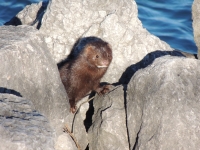It may come as a surprise to many how common minks are in the Milwaukee area. They can frequently be seen running along the shorelines of lakes, rivers, and streams. I have even seen one run across the road in Walker’s Point, carrying a chipmunk in its mouth. Next time you go for a hike along a body of water, keep an eye out for these critters darting between the rocks and in and out of the water. The boulders used as shoreline erosion control double as great habitat for minks!
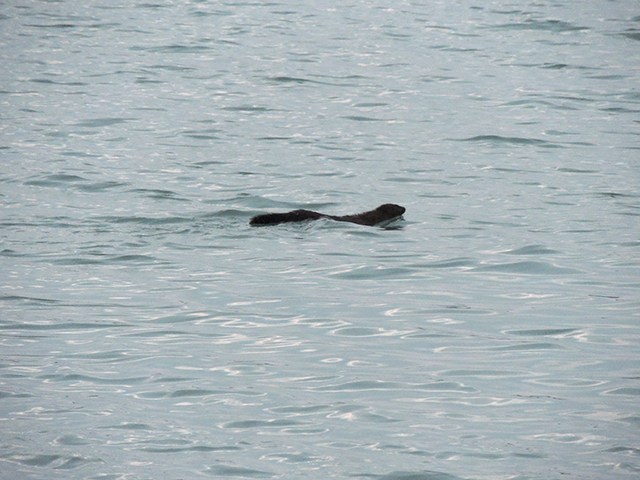 These photos of my current favorite animal represent the accomplishment of a goal I set for myself back in August when I first started getting into wildlife photography. Around that same time, I started working for the Wisconsin Department of Natural Resources doing fisheries surveys. All that time hiking along various rivers & shorelines gave me the perfect opportunities to cross paths with these critters. These encounters inspired me to set a goal to get a picture of a mink, something that I thought would be challenging but possible. I didn’t realize just how difficult it would be! I started going out on walks with my camera to places where I’d seen them before, or places I thought they’d be, at least 2-3 times a week. Most of the time, I wouldn’t see any. But sometimes, I’d get lucky and my heart would jump as I saw a flash of silky brown fur scurrying over the rocks. The most I’d ever seen at once was FIVE, all munching on a salmon carcass. On the rare occasion that I see one, it’s usually a brief glimpse and the mink disappears too fast for a picture. Other times, I’d see them in low-light and wouldn’t be able to capture a still, crisp photo because they never stop moving!
These photos of my current favorite animal represent the accomplishment of a goal I set for myself back in August when I first started getting into wildlife photography. Around that same time, I started working for the Wisconsin Department of Natural Resources doing fisheries surveys. All that time hiking along various rivers & shorelines gave me the perfect opportunities to cross paths with these critters. These encounters inspired me to set a goal to get a picture of a mink, something that I thought would be challenging but possible. I didn’t realize just how difficult it would be! I started going out on walks with my camera to places where I’d seen them before, or places I thought they’d be, at least 2-3 times a week. Most of the time, I wouldn’t see any. But sometimes, I’d get lucky and my heart would jump as I saw a flash of silky brown fur scurrying over the rocks. The most I’d ever seen at once was FIVE, all munching on a salmon carcass. On the rare occasion that I see one, it’s usually a brief glimpse and the mink disappears too fast for a picture. Other times, I’d see them in low-light and wouldn’t be able to capture a still, crisp photo because they never stop moving!
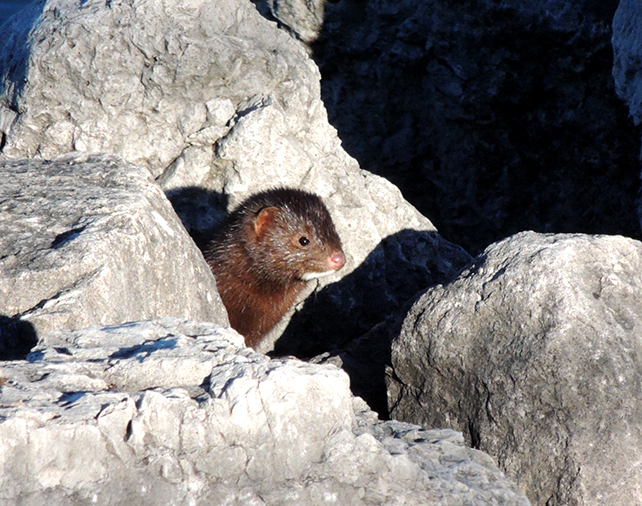
It didn’t take terribly long before I accomplished my goal of getting a picture of a mink. But I wasn’t super satisfied with the pictures I got. I moved the goalpost to get a GOOD picture of a mink. A bit vague, but I’d know it when I got it. Once the snow finally came this year, I was able to observe their tracks and see where they like to hang out, but the cold also added stress to my camera gear, another layer of difficulty. On more than one occasion, I’d be staring at one through my camera lens, and my freezing camera battery would die as I go to press the shutter button. Other times, the mink would be just out of focus or would move just out of frame. There’s usually only a split second to capture the shot, and then the mink takes off running or disappears into the rocks or the water. Challenging myself in this way has driven me to learn more about photography to better understand my gear and be prepared for that split second when it comes. Recently, I read a Q&A with a professional wildlife photographer where she was asked which animal she finds the most difficult to photograph, and she said weasels because they never sit still! That is certainly true of their cousin the mink as well. I finally accomplished my goal, and I can honestly say that all those hours standing out in the cold were worth it.
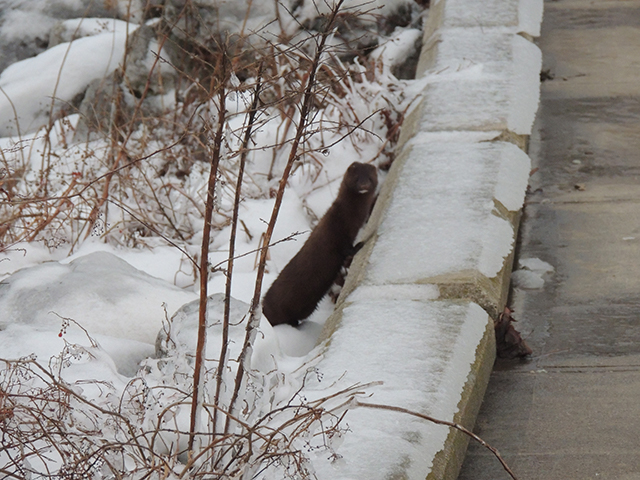
If you’ve ever encountered a mink fur coat, it’s not hard to see why they are so highly valued. Their fur is a striking, beautiful, shining dark brown, and if you’ve ever had the chance to feel it, it is exceptionally soft and silky. It apparently keeps these tiny animals warm even when swimming between chunks of ice in the winter. Even more powerful than the quality of their fur, however, is the power of their personalities. Minks are surprisingly unafraid of humans. They are cautiously curious. They are not like other wildlife, take deer for example, that often take off as soon as they get wind of you. Many times, I’ve seen one stick its head out from behind the rocks just far enough to stare me down and give me the ol’ stank eye (you can see this look in some of these pictures) and then walk right past me. If I had to guess what they were thinking, I’d say it’s along the lines of “great, now I gotta deal with this guy.” I’ve even had them walk between me and the water—just about across my toes—while fishing from shore. Their faces express emotion in the same way that a cat or a dog does. In groups, they make vocalizations reminiscent of a dog or a puppy. Each individual mink has a unique personality and characteristics that are especially obvious when multiple are present at one time. Keep in mind that a good friend of nature should never feed wild animals, even if you have the best intentions. Feeding a wild animal habituates it to humans, and can put the animal in dangerous situations like approaching vehicles or people with malicious intent. It can also hurt the animal’s ability to find food on its own.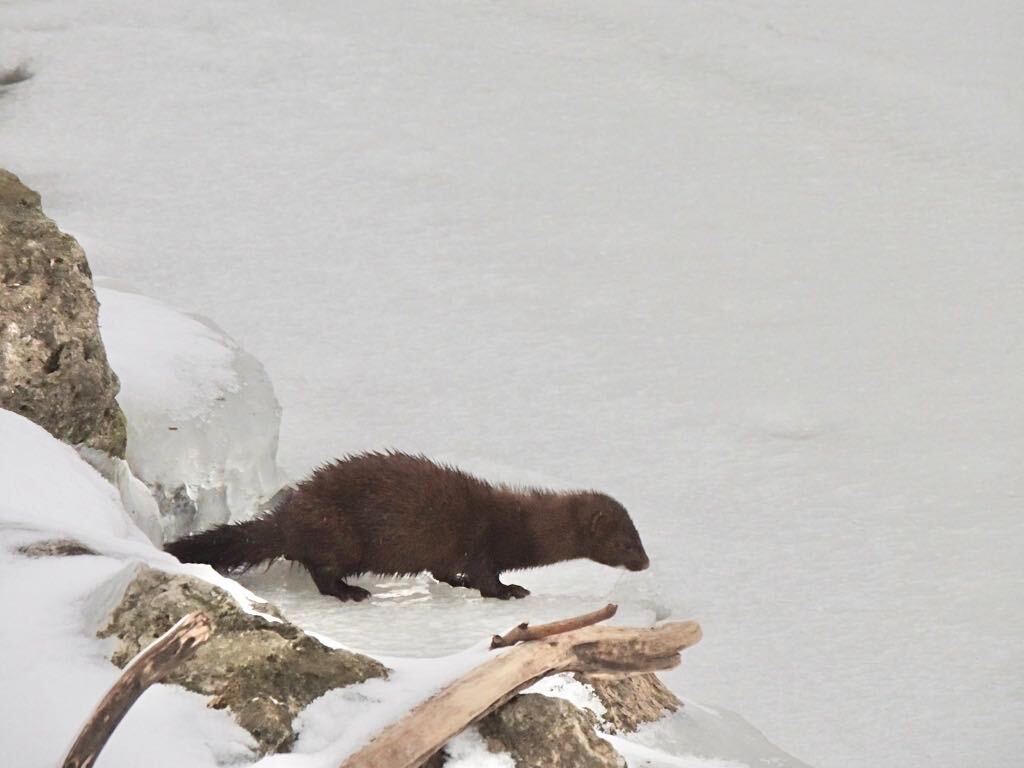
Mink sightings in the Milwaukee area are especially interesting considering the historical context of the city. Milwaukee was founded as a major fur-trading post, with people coming from far and wide to trade furs here. These furs were prized among the upper class in Europe and made many traders very wealthy. With people who want their skin around every corner, I’m sure it was no easy life for a furbearer around Milwaukee. Over time, the fur trapping industry died down as fur farms became the primary provider of pelts. Through habitat rehabilitation and changing attitudes, wild beavers and minks have returned to even the downtown area and are now abundant. Minks are an indicator of a healthy ecosystem, as these carnivorous predators require an abundance of prey animals to thrive.
Anyway, next time you see a cool wildlife shot, now you’ve got an idea of how many “almost” pictures there were. Maybe that’s part of why I like doing wildlife photography. For every cool picture that gets shared, there are probably 10 “almost” pictures or encounters that you don’t get to see. Keep an eye out for minks on your next shoreline hike!
Photos by Rob Dragani.


